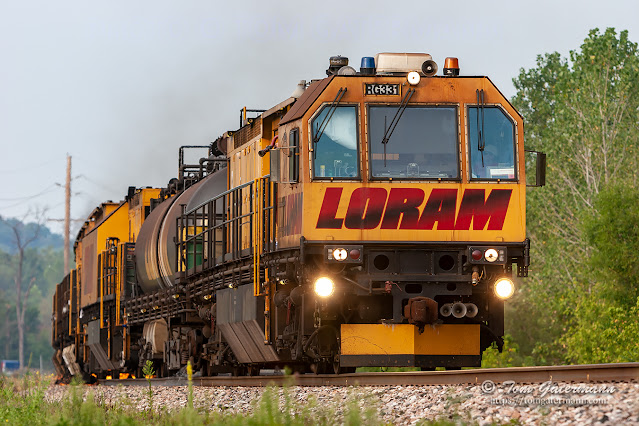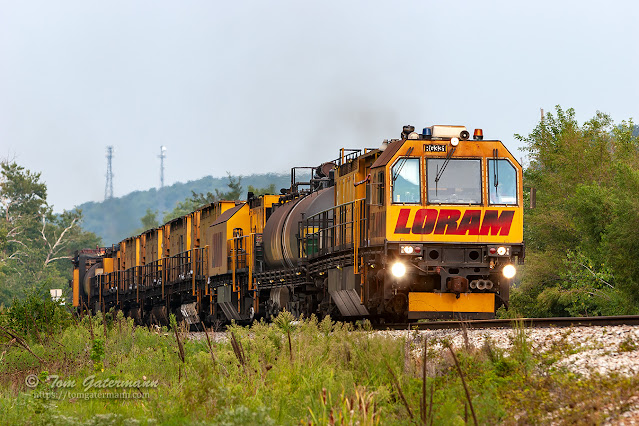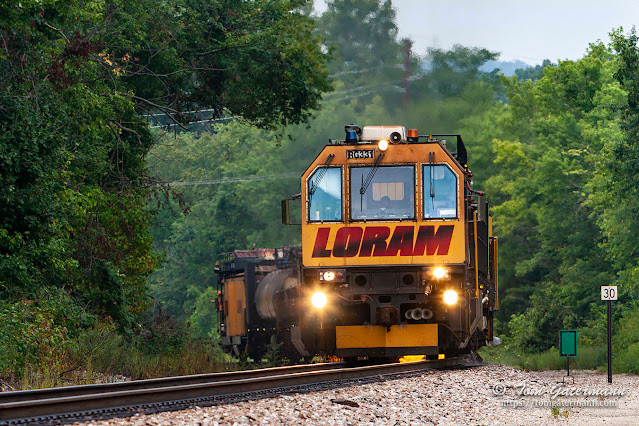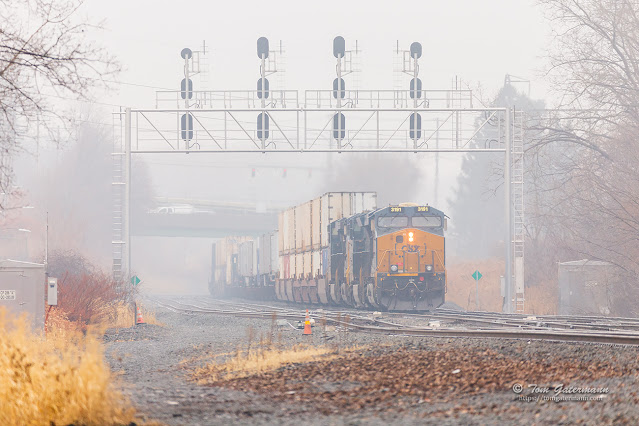Loram Rail Grinder working on BNSF's Cuba Subdivision
On muggy morning in August 2006, I was exploring along BNSF's Cuba Subdivision in Pacific, Missouri. While out that way, I happened upon one of Loram Technologies' rail grinders working its way east on the Cuba Subdivision.
Loram rail grinder RG331
 |
| LMIX RG331 is grinding the rails on BNSF's Cuba Subdivision near MP 32, at Pacific, MO. |
Rail grinders are essential to maintaining the life of railroad tracks. Over time the profile of the rail head is worn and develops irregulates from contact with train wheels rolling over them. Rail grinding helps to restore the rail's profile and prolongs the life of the rails, as well as the wheels of a train.
 |
| The outer rails on curves are especially prone to more wear and tear due to centrifugal forces. |
The rail grinders used on heavy mainlines aren't just a single maintenance of way (MoW) rail car, but an entire train. A typical consist is made up of at least a control car, a power car, the grinding cars, tanks cars for carrying water, and a support car.
 |
| Loram's rail grinder makes its way east at Pacific, MO. |
LMIX RG331 had a ten-car consist made up of a control unit/locomotive, two tank cars, four grinding cars, what I believe were two power cars, and a support car on the end of the train.
 |
| A Loram grind car does its job working on the Cuba Subdivision at Pacific, MO. |
A rail grinder uses a series of circular grinding stones mounted on the grind cars to remove irregulates and reshape the rail head. The grinding stones range from coarse stones to finer stones. The stones are changed regularly as the grinding of steel rails wears the stones out quickly.
 |
| Sparks fly as the rail head is grinded on a segment of track in Pacific, MO. |
When the rail grinding is occurring a shower of sparks can be seen around the grinding compartment on the bottom of the grind cars. The shower of sparks puts on quite a show and is what draws the most attention to these trains. Especially, if you happen to see one working at night. The grinding process is also why these trains carry water with them so that the tracks and surrounding area can be sprayed down to control hot spots that could cause fires.
 |
| Sparks can be seen under RG331 as it works on grinding a curve at MP30, at Allenton, MO. |
I'm not sure how many grinding stones RG331's grinding cars contained in total since I can't find any specifications on it. The newer RG400 series of rail grinders from Loram can be configured with sixty to one hundred and twenty grinding stones per train.
 |
| LMIX RG331 cruises east at MP 28 in Eureka, MO. after finishing up. |
Photographs taken on August 25, 2006, at Pacific, Missouri, Allenton, Missouri, and Eureka, Missouri.




Thanks for the photostory Tom. On a rail trip from Ottawa to Vancouver a number of years ago we passed a rail grinding Loram train. It certainly wasn't as clean and new looking as pictured in your story. I wasn't sure what it was all about back then, now I know more.
ReplyDeleteThanks a lot, Jim. Glad you got something helpful out of the write up.
DeleteVery interesting. I have seen these before but never in action and never knew what they were.
ReplyDeleteSeeing and hearing them in action is very interesting. Especially at night.
Delete